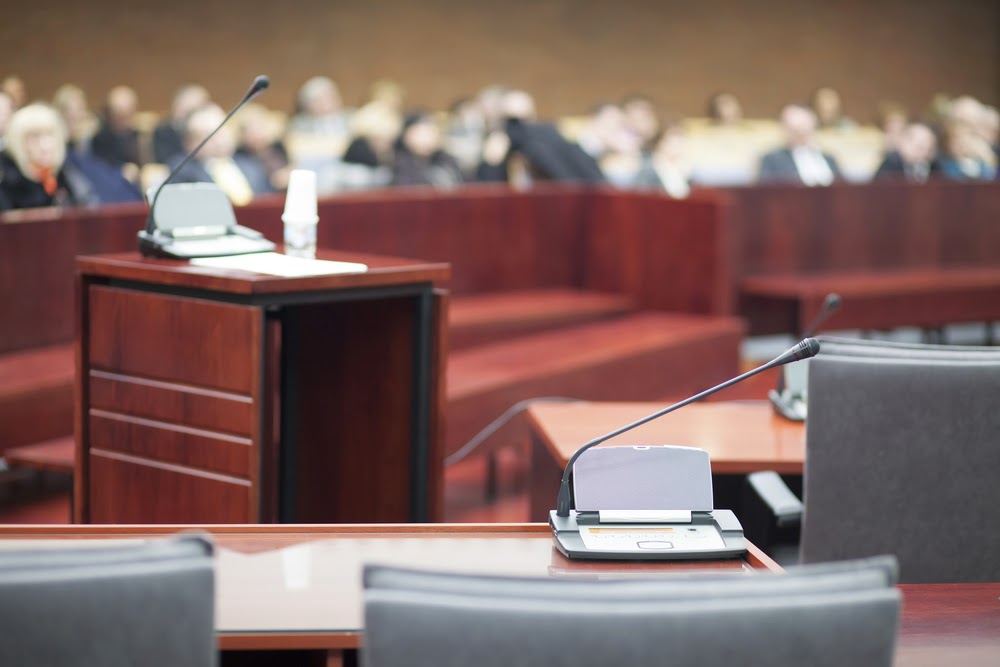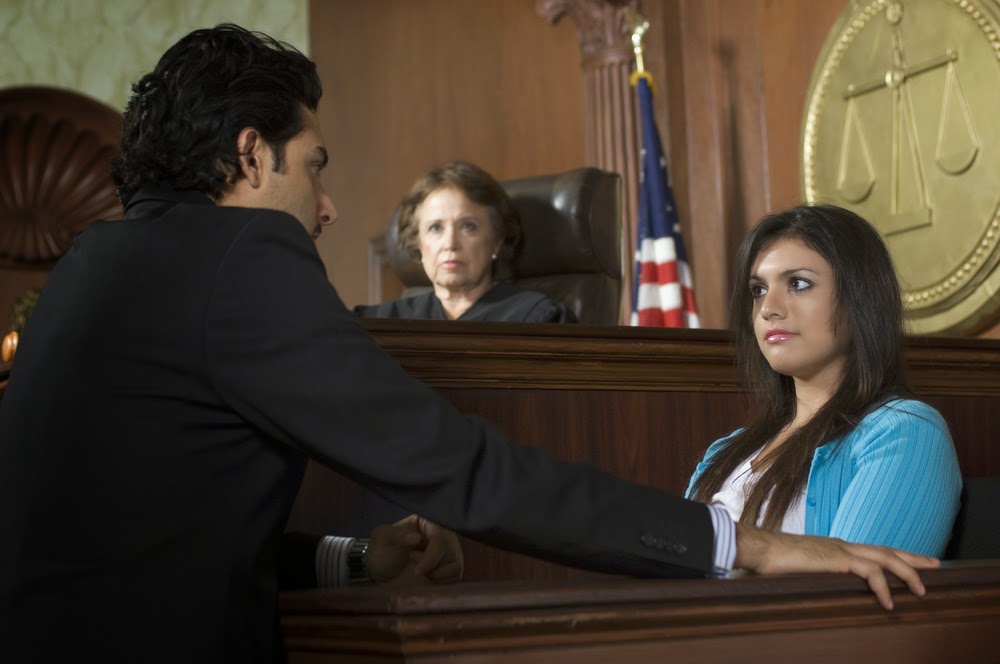The Missouri Constitution guarantees each citizen a right to trial by jury in both criminal and many civil matters.
Jury service is an important duty for citizens of the United States and of Missouri. Often, however, the jury duty process can be confusing and complicated. Deputy & Mizell would like to run a series of Blog posts about the Jury Duty process in our area to help you understand what is required when summoned to serve on Jury Duty.
This post will focus on what you can expect to see once the trial begins. Information for our blogs is gathered from www.courts.mo.gov.
Civil and Criminal Cases
Cases fall into two broad categories, civil and criminal. For ease of reference, the following information deals generally with civil cases. Civil and criminal cases are basically tried under the same rules and in the same manner. However, some principal differences do exist, and they are listed below.
1. More proof is required to find a person guilty of a crime in a criminal case than is required to return a verdict for a plaintiff in a civil case. The crime must be proven “beyond a reasonable doubt.” In order for a plaintiff to win a civil case, it is typically only necessary to prove the case by a “preponderance of the evidence.” Sometimes in a civil case, a defendant will make a claim or claims, called a counter-claim against the original plaintiff, which like the plaintiff’s claim, requires a lower burden of proof than the criminal case.
2. In a civil case, three-fourths or more jurors may return a verdict, whereas in a criminal case the verdict must be unanimous.
The Parties and Pleadings
In a civil case, the party filing a lawsuit is called a plaintiff. The party against whom the lawsuit is filed is called a defendant. Notice of a suit is given to the defendant by service of a summons. The plaintiff’s claim and demand are stated in a petition. The defendant’s response is stated in an answer. If the defendant makes a claim against the plaintiff, such a claim is called a counterclaim. If a counterclaim is made, the plaintiff’s answer is called a reply. These papers, called pleadings, will have been exchanged between the parties some time before the actual trial begins. If one party has more than one claim against the other party, each claim may be stated as a cause of action.
In a criminal case, the person charged with a crime is the defendant. The state is the prosecutor, and all crimes are prosecuted in the name of the State of Missouri. This is because when a crime is committed, it is the laws of the state that are broken, and the offense is against the people of the state. The lawyer who represents the state is called the prosecuting attorney or the circuit attorney. The charge or complaint in a criminal case is made in writing. If made by a grand jury, the charge or complaint is called an indictment. If made by the prosecuting attorney, it is called an information. If more than one offense is charged, the charges may be combined, but they are separately stated and each charge is called a count. For instance, an information may charge that the defendant (count 1) robbed the prosecuting witness, and (count 2) that the defendant assaulted and beat the prosecuting witness. Usually, some time before the case is called, the defendant is arraigned. This means that the defendant is brought before a judge and the charge is read to him or her. For each offense, the defendant is asked “How do you plead?” and he or she pleads “guilty” or “not guilty, ” for example. If the defendant pleads not guilty, the case may be set for trial.
In a criminal case, the “plaintiff” is the state, and the “plaintiff’s lawyer” is the prosecuting attorney.
Opening Statements
The plaintiff’s lawyer must make an opening statement, which explains the plaintiff’s claims and outlines the evidence by which the plaintiff expects to prove the claims. The defendant’s lawyer is not required to make an opening statement but may do so. The defense may make this statement either following the plaintiff’s statement or reserve it until after the plaintiff has presented his or her case. These statements are not evidence but only explanations of what each side claims and expects to prove. The claims must be proved by evidence. The conflicting claims constitute the issues.
Evidence Presentation
Following opening statements, evidence regarding the case is presented. Anything that tends to prove or disprove a claim about the facts is called evidence. Evidence may be something in writing, or it may be an article such as a document, an object, a photo or the like, in which case it is called an exhibit. (Conversely, not all exhibits are evidence.) Evidence may also be the statement of a person, in which case it is called testimony. If a witness is absent, written testimony from that witness may have been taken before trial. This written testimony, called a deposition, is taken under oath and after both sides have been given a chance to be present.
If a witness has already testified in court under oath, this testimony has been taken down and typed. This testimony is called a transcript.
There may be additional evidence, such as facts that the parties have stipulated are true or facts that they have admitted in sworn documents before trial.
Examination of Witnesses
Unless the case can be proved by writings, the plaintiff will call witnesses to testify. The witnesses swear (or affirm) to tell the truth, the whole truth, and nothing but the truth. The lawyer who has called a witness proceeds with direct examination. In so doing, the lawyer asks questions to bring out the facts of the case. In any important matter, the lawyer is not allowed to “lead” the witness by asking questions in a form that would suggest the answer. The question asked must appear to have some bearing on the case, and the witness must be shown to personally know what he or she is talking about.
If these and other rules are not followed, the other lawyer may properly object and, if the question is improper, the judge will sustain the objection, which means that the question cannot be answered. If the question is proper, the judge will overrule the objection, and the answer is given.
When the direct examination is concluded, the lawyer for the other side may cross-examine, or ask questions of, the witness. The cross-examining lawyer may ask “leading” questions. At the conclusion of the cross-examination, the first lawyer may ask questions on redirect examination to clear up points developed on cross-examination.
To keep out improper information, witnesses are allowed to answer only the questions asked. Both sides may ask questions to find out all a witness knows that is relevant to the case. If the witness makes a statement that is not an answer to a question, it may be stricken. The judge may instruct the jury to disregard that answer entirely.
Hearing and Seeing Witnesses
Each juror should pay close attention to the witness who is testifying, both to hear what the witness says and to watch his or her manner and actions. If a juror cannot hear or see clearly, he or she should not hesitate to interrupt the proceedings and advise the judge of that fact.
Resting the Case
When all evidence for the plaintiff has been submitted, the plaintiff’s lawyer indicates this by “resting” the case. When the defendant’s case has been completed, the defendant’s lawyer rests the defendant’s case.
Defense and Rebuttal
The defendant’s lawyer calls witnesses for the defendant and offers evidence after the plaintiff’s case is first rested. Then the plaintiff may offer evidence in rebuttal to explain or deny the defendant’s evidence.
Motions to Strike; Directed Verdict
When a lawyer requests a court to take action, this is usually done by making a motion. Thus, the lawyer may make a motion to strike out certain testimony because it was not properly received. If the judge orders that the testimony be stricken out, the judge will instruct the jury to disregard the stricken testimony.
At the close of the plaintiff’s case, at the close of the defendant’s case, or after all the evidence in the case has been presented, one or both sides may ask the court for a directed verdict. If the undisputed facts show that either one of the parties is entitled to judgment as a matter of law, the judge directs the verdict, because there is nothing for the jury to decide. In such a case, the judge alone is responsible, and the jury must do as the judge directs. In most cases, the judge refuses to grant the motion. That does not mean that the judge thinks the other side is entitled to a verdict in its favor. It only means that the jury ought to consider the matter.
Closing Arguments
After all the evidence has been presented, each side may make its arguments to the jury, giving the reasons why that side should win. If the testimony has been contradictory, each side will tell the jury why its witnesses should be believed rather than those for the other side.
You should listen to these arguments carefully, always remembering that the lawyers are each giving only their side of the case and that what the lawyers say is not evidence. You should not make up your mind until you have heard all sides of the case and the instructions of the judge.
Instructions
At the start of the case, the judge will read general instructions on the way the case will proceed and on the proper conduct of jurors.
Toward the close of the case, the judge will read instructions indicating what you must decide to reach a verdict.
You should listen to all instructions very carefully and try to remember them. These instructions will be given to jurors in writing to take with them when they retire to the jury room to deliberate.
Stay tuned for the next blog post on jury duty and the verdict process. Serving on a jury can be an enjoyable and educational experience!

Representing Clients Across the Lake of the Ozarks RegionWe are the best Lake of the Ozarks Lawyers!
We are the Attorneys at the Lake of the Ozarks to call if you need help
Contact our office today to learn more about our legal services and what we can do to help you. We are available during regular business hours and by appointment on evenings and weekends. You can reach us by phone at 417-532-2191, toll free at 1-877-532-2191 or via e-mail to schedule your free initial consultation with a lawyer.
Follow us on all of our social media channels!



